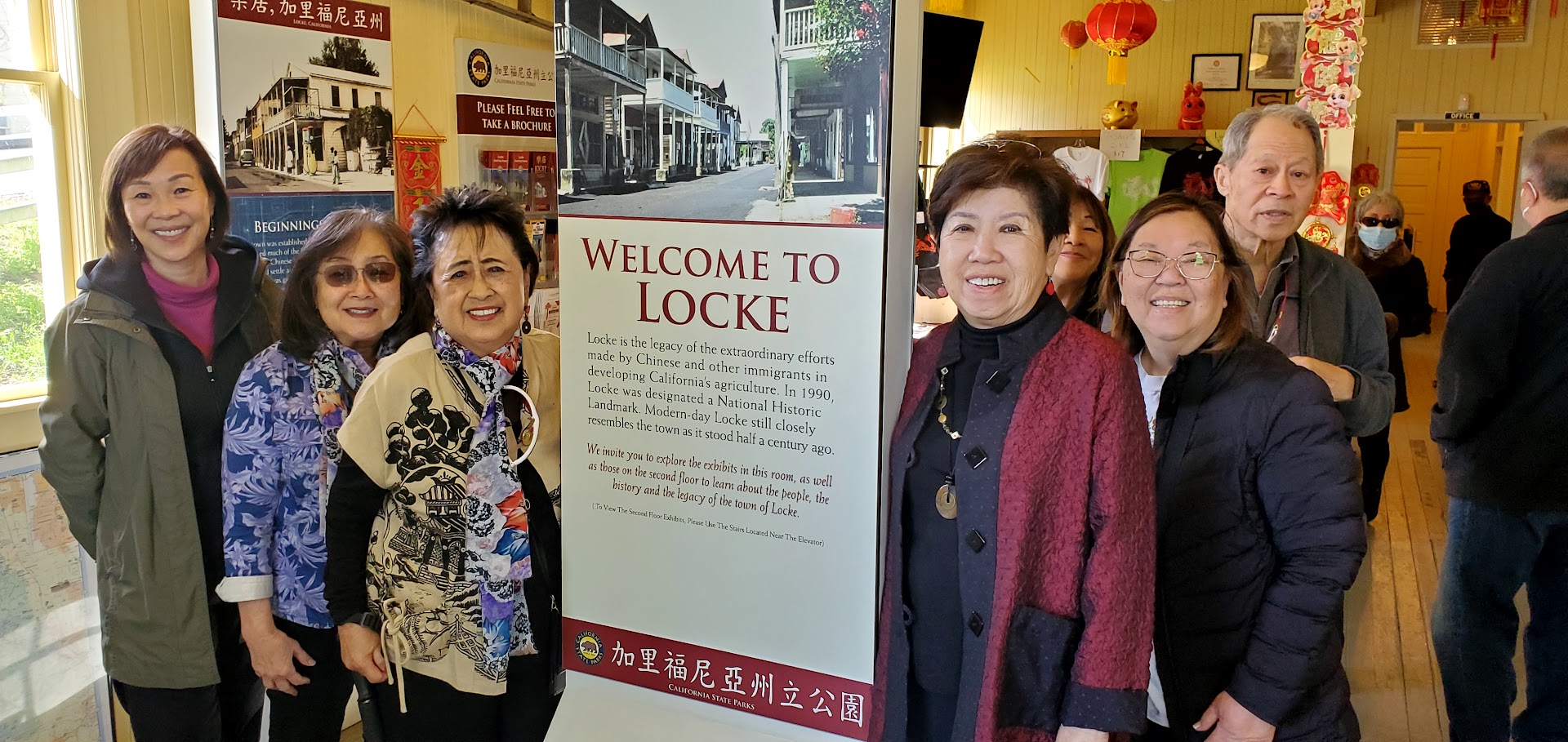
VISITING LOCKE, CA IN SACRAMENTO DELTA AREA
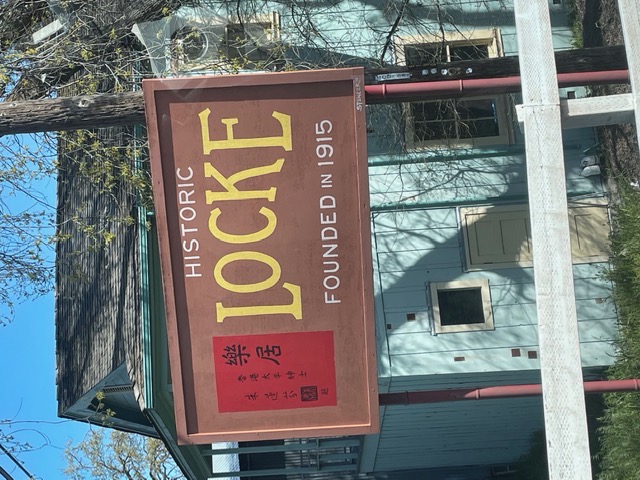
VISITING LOCKE, CA, IN THE SACRAMENTO DELTA AREA
BY Gerrye Wong April 5, 2023
When I told many of my Chinese friends I was eagerly going on a tour of the old historic “Chinese Town” of Locke, CA, I was shocked to learn many had never heard of the town, its historic designation as an historic district, a National Historic Landmark and it’s role in California’s Chinese American history. So today’s column is a history lesson about the town of Locke, which was established in 1915 and is the only existing rural Chinese town in America founded and inhabited almost exclusively by Chinese until recent years.
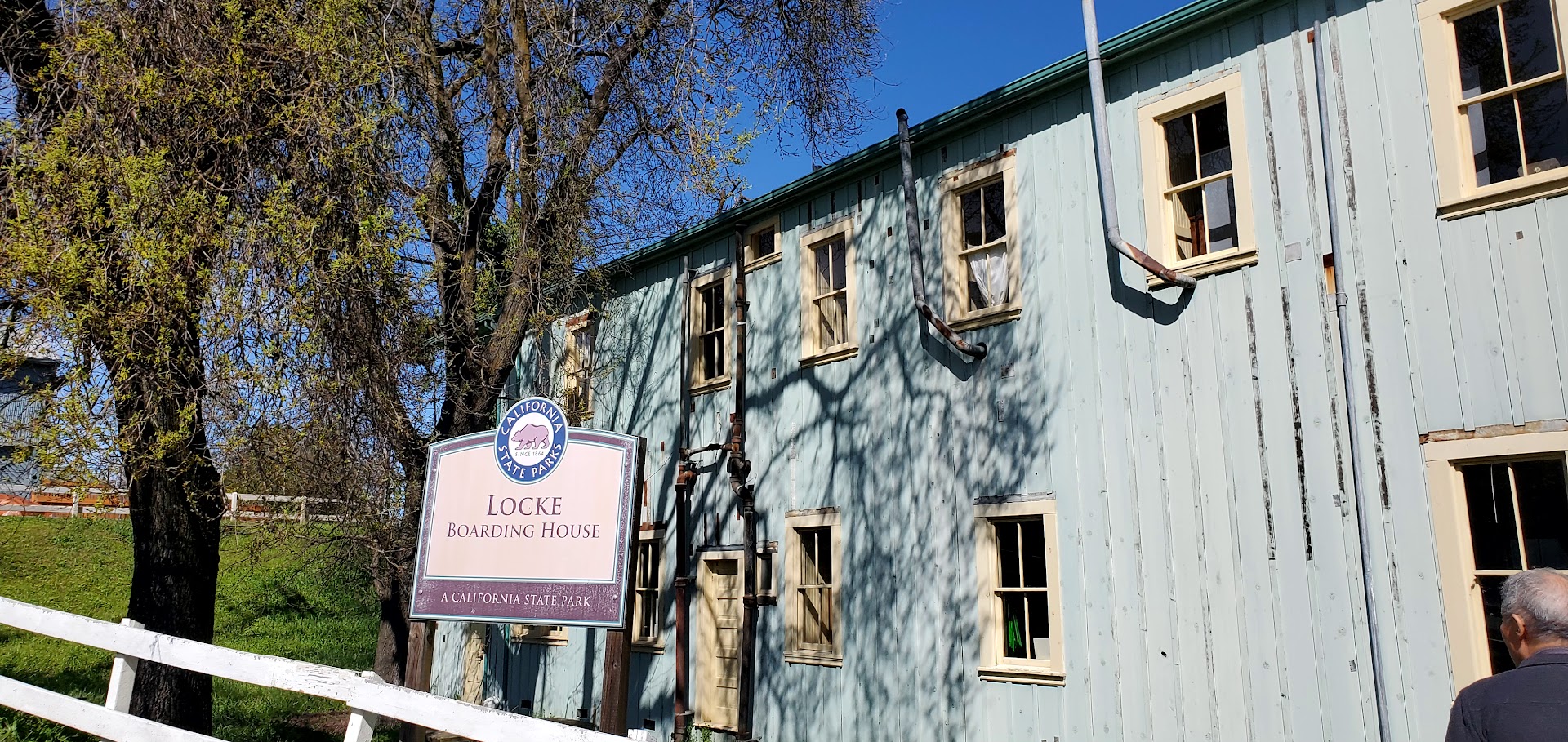
Growing up in San Jose and Oakland, I somehow had heard of the Delta towns of Locke, Walnut Grove, Isleton and Courtland but had never gone there. Perhaps some of my friends had family roots there or others told about spending summers there working picking fruit during harvest times. Or perhaps my father told me about his National Dollar Store boss, Joe Shoong, having established a Chinese School for the children in Locke to help them retain their language and culture in the mid 1920s . However, just like so many of my contemporaries who to this day, know nothing about the Chinese communities that occupied this Sacramento Delta, I knew nothing of the lives of the Chinese farming citizens who established their town of Locke after being displaced due to a fire in their Walnut Grove homes in 1915. My California history classes in school never spoke of any involvement or contribution the Chinese pioneers in the Delta made to the building of California’s economy.


Fast forward to this week when I formed a group of South Bay friends to have a tour arranged with Locke Foundation leaders Douglas Hsia, Carol Lee and Corliss Suen Lee to educate us on the history of this unique town of Locke. Our tour began when these two dedicated volunteer ladies met us at the Locke Boarding House Museum, which in 2005 was acquired by the California State Parks to be restored so that today it serves as a museum dedicated to the 100+ years Asian history of Locke and its people. We were greeted by Mark Miller, a State Park Interpreter, Locke Foundation member and volunteer docent, who began our history lesson of the area.
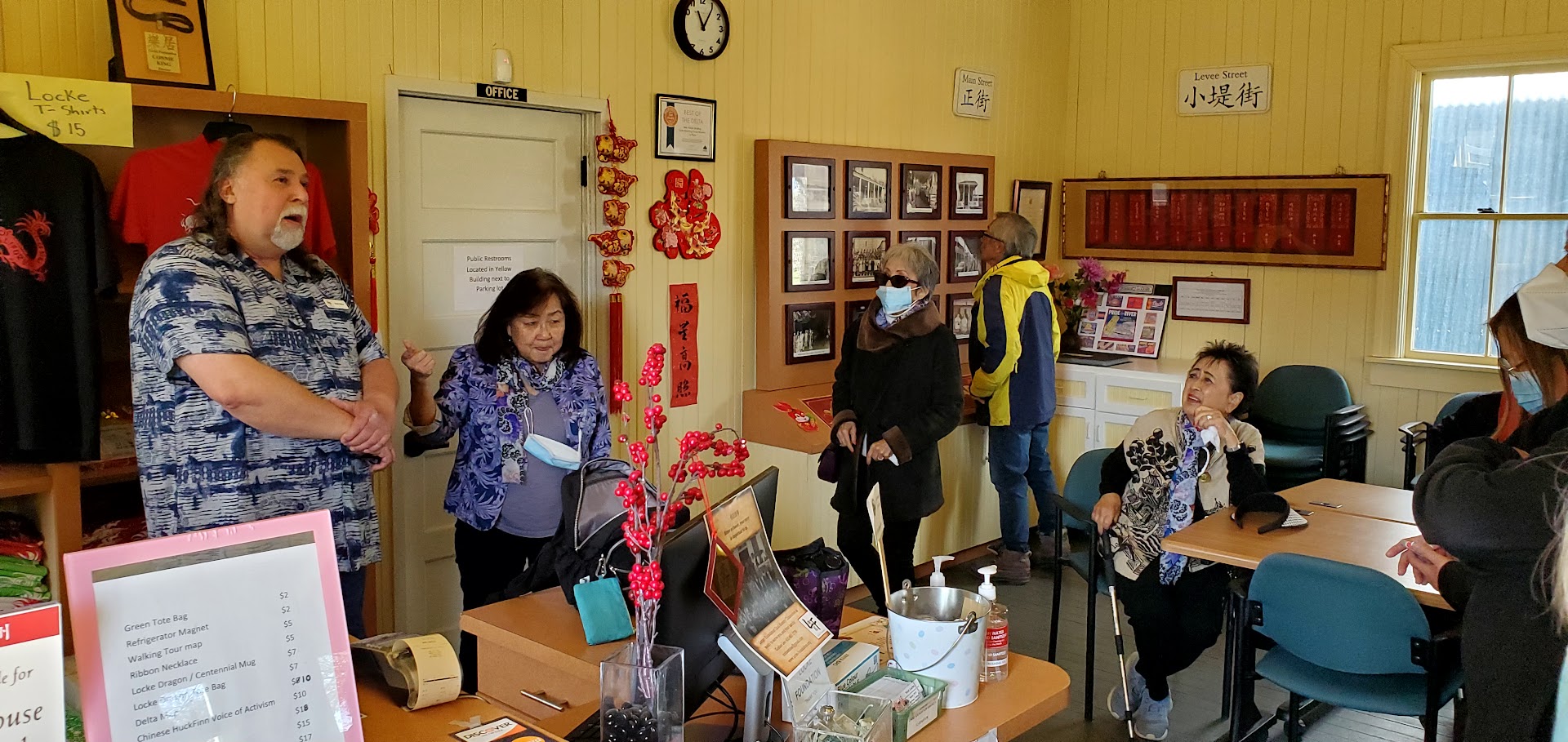
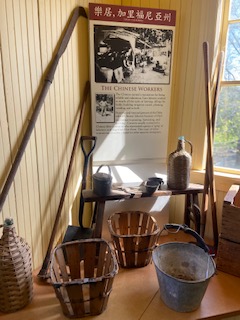
Mark Miller and Carol Lee meet group in Locke Boarding House to explain exhibits on two floors.
Our docents for the day, Locke Foundation members Carol Lee and Corliss Suen Lee both grew up in adjacent Walnut Grove and were schoolmates since the second grade. There were many fond memories and stories to share of life in Walnut Grove where the Chinese and Japanese communities thrived with hard working parents making a living for their families and succeeding generations’ futures. They took us around the Locke Boarding House which has a wonderful exhibit of the lives of immigrant farm workers who often stayed at the Boarding House with signage depicting the small rooms laborers and visitors to town rented and maps showing where they originally immigrated from. This exhibit is a wonderful introduction to the life of Locke from its 1915 beginnings to its heydays up through the 1940s. Fortunately for us there was also a traveling photo exhibit on display. The building, once owned by a Japanese family, housed farm workers who picked and processed the asparagus and pears that grew in the peat-rich delta soils. The California State Park’s Locke Boarding House Museum honored over 100 years of Locke’s Asian cultural history in this interpretive center with its exceptional well preserved exhibits.
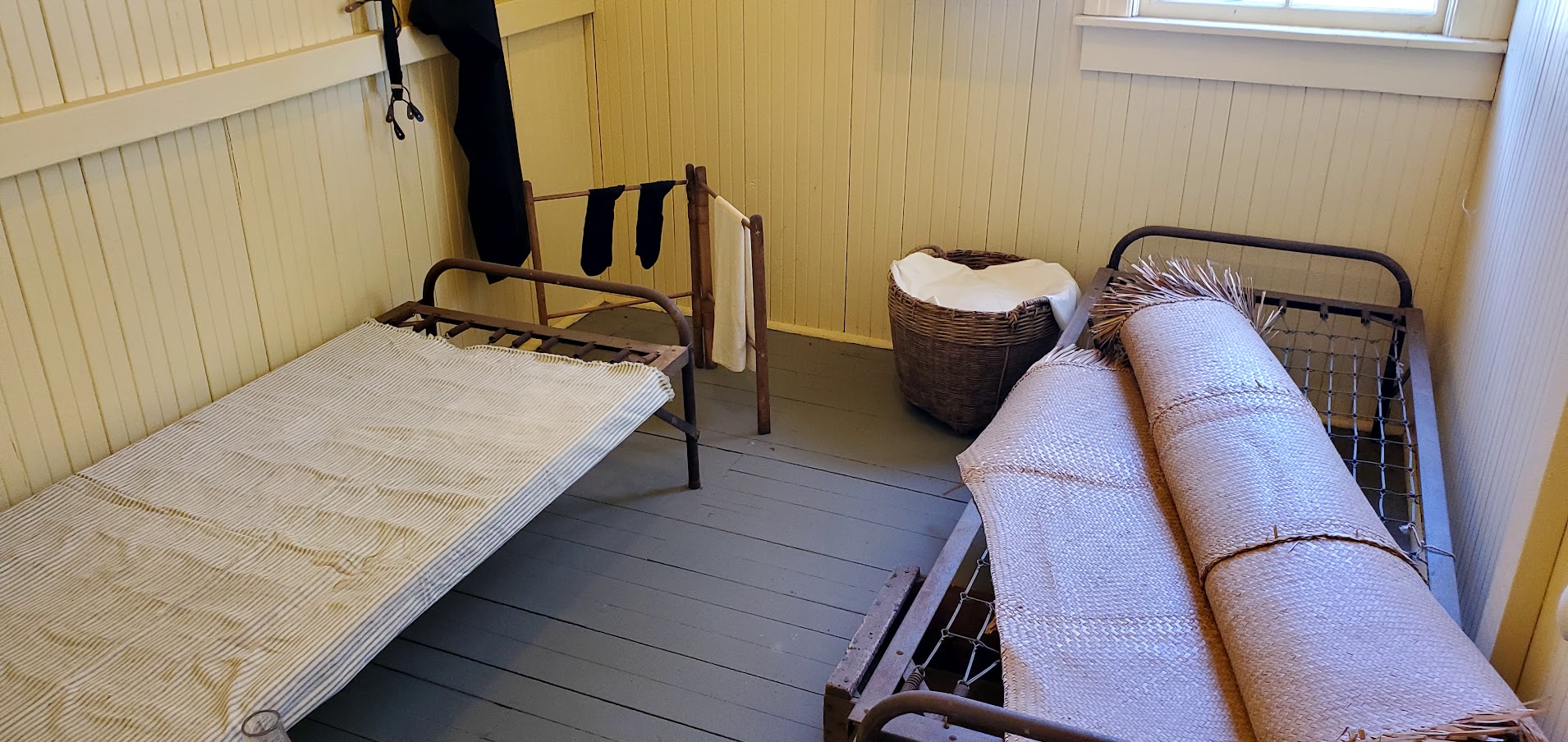
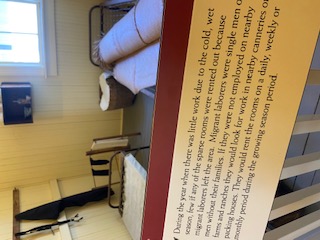
Exhibit in Boarding House showe small rooms and simple beds the roomers slept in
Corliss recalled her maternal grandmother raising her 12 children in Locke and her hardships. Her parents owned a store in Locke before relocation to Walnut Grove. Their department and clothing store catered to the area farming communities and the non-Chinese across the river. Carol remembered her mother doing seasonal work in the Delta and her parents eventually moved back to open a grocery store. Carol shared the history of the buildings in Locke and old stories and oral histories recently gathered from prior residents and descendants. Their desire at present is to collect and share the rich history and stories of Chinese Americans who played such a major part in the development of the levees along the Sacramento River, that established the rich farmlands of this Delta area even during the period of the discriminative Alien Land Law when non-citizen Chinese were not allowed to own property. These two ladies announced their newest Oral History Project focusing on “Women’s Voices”. They hope to collect the many oral histories of the overlooked and marginalized Chinese women of the Delta and explore their lives in how they overcame and coped with prejudices, discrimination and racism during their lives. Most came not knowing the language, yet successfully raising large families under impoverished conditions. My personal friend, Ed Jang, once told me of his own mother working long hours everyday with painful bound feet, raising ten children while feeding their farm laborers on the ranch where they were sharecroppers.
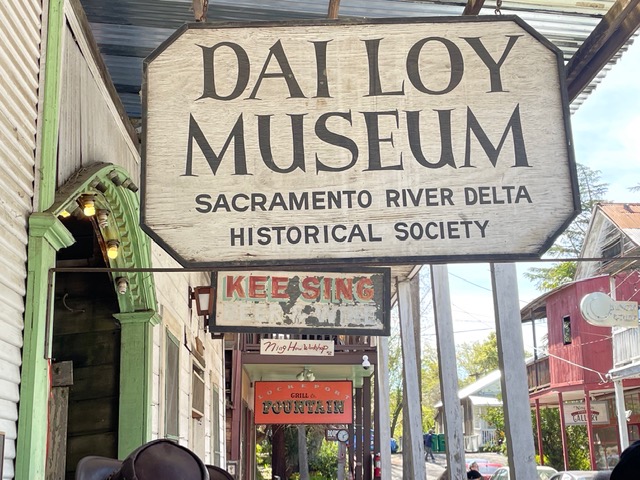


Tour members explore the Locke museums . Carol Lee, Gerrye Wong & Mary Yin enjoy exhibits . Calvin Wong discovers his own painting in Jan Ying Museum
As our group, along with the Davis Chapter of the APAPA organization, including Mary Yin Lai, walked down the lone Main Street of Locke, we learned that during its heyday from the 1920s-1940s Locke was an autonomous island of Chinese culture with a population of about 600, and a seasonal farm labor population of an additional one thousand. As the Locke Foundation brochure states, “At one time Locke had four restaurants, a half dozen markets, dry goods stores, five brothels, a post office, two slaughter houses, a flour mill, canneries, shipping wharves, an opera house, speakeasies during Prohibition and five gambling houses. Located about 30 miles south of Sacramento, Locke is truly the legacy exemplified by the extraordinary efforts and resilience of the Chinese in developing agriculture in California.”
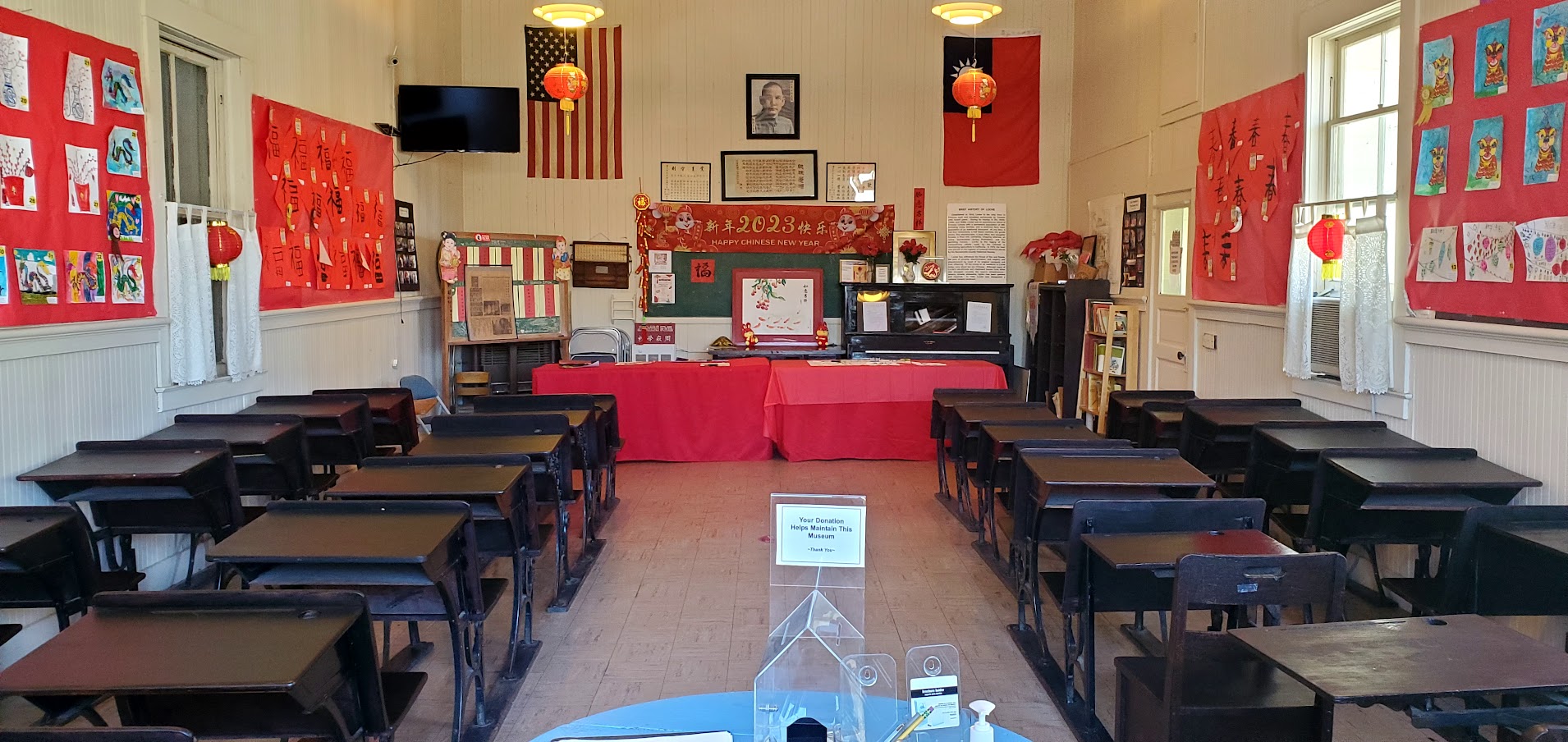


Classroom in Joe Shoong School House for Chinese language classes. Sharon Lai & Gerrye Wong read about exclusion Act. Clarence Chu owns Locke Museums.
That day, as my group consisting of Fremont citizens Aaron and Maelene Wong, Gene and Mary K Lim, and Benny & Sharon Lai, alongside CHCP members Sue & Hubert Gong Lee, Elizabeth Lee, together with Sunnyvale residents Calvin and me walked the main street of Locke, we learned that in 1971, the town was placed on the Registry of National Historic Places. Essentially, Locke still looks almost as it did since its beginning. Of the approximate 70-90 residents of Locke today, less than a dozen are Chinese. I wandered into the Chinese Cultural Shop to see many new and old items for sale in this unique shop placed in a historic Locke building. Met owner Clarence Chu, who although not a descendent of its original pioneers, has been active in the redevelopment and preservation of Locke as a Chinese cultural site since the 1970s. He also owns and manages the towns museums, the Joe Shoong Chinese School, Jan Yin Social Hall, and Dai Loy Gambling Museum. Clarence played a key role in having a State mandate where the owners of buildings can finally own the land beneath them.
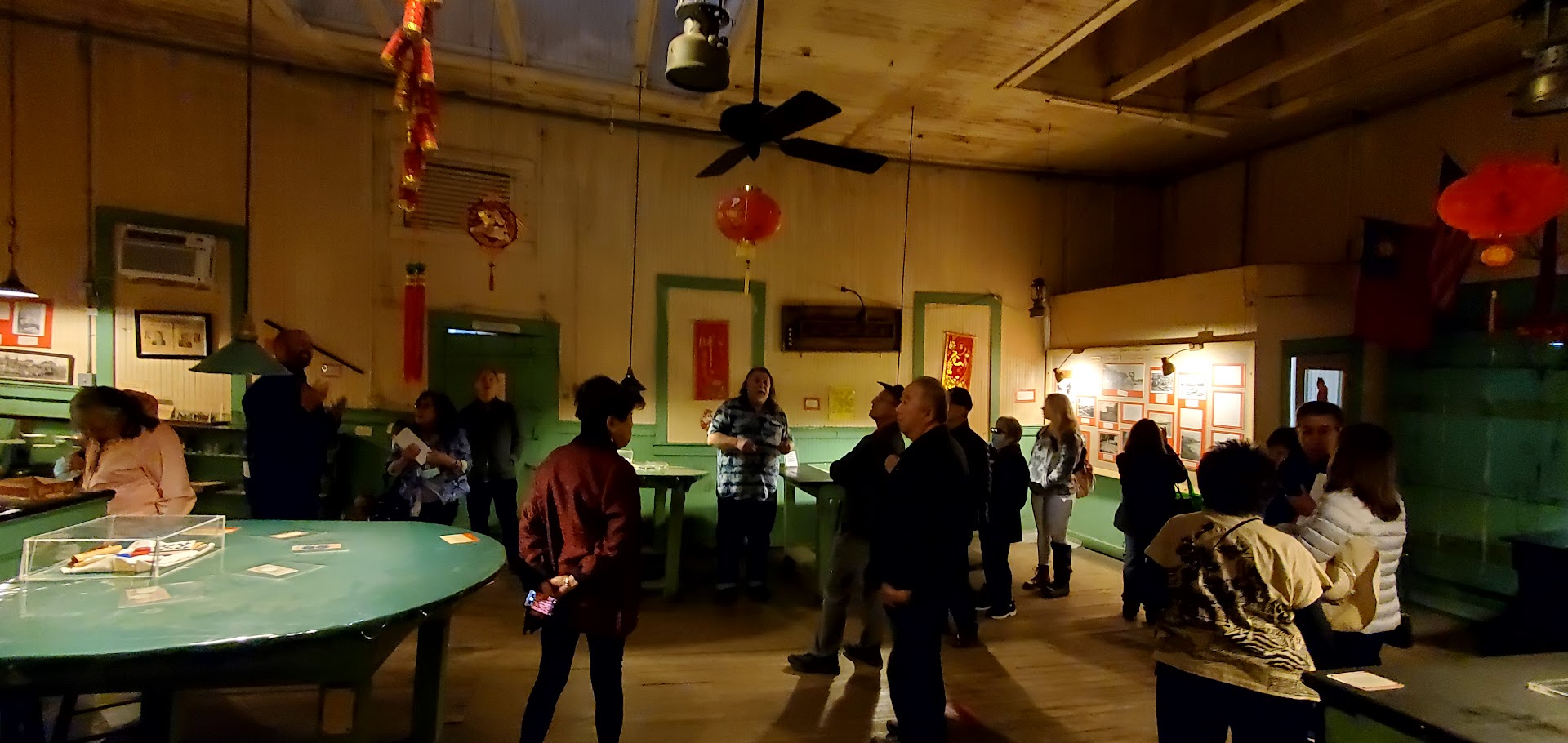
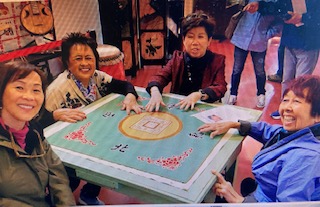
The former gambling parlor is now th Dai Loy Museum which exhibits many of the games played during Locke’s busy heyday.
In 1990 Locke became a National Historic Landmark. Locke Foundation proudly supports this unique town of Locke, proclaiming it as the only rural Chinese town left in the United States. As we visited the Dai Loy Museum we saw examples of the different gambling games played during the town’s boom times. We saw that the town experienced years of prosperity as the landowners profited from the fruit tree and various cultivated crops because of the expertise and experience of the Chungshan Chinese laborers due to their experience in China’s Pearl River Valley delta, farming, pruning, harvesting and packing.

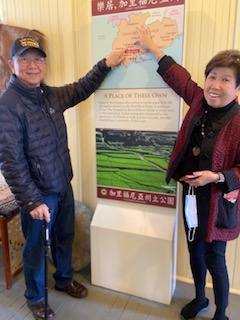
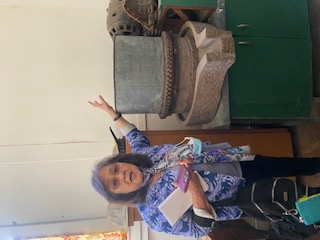
In Locke Museums Calvin Wong & Mary K Lim find home villages on map display. Tour guide Carol Lee showed machine that made food from mung beans.
Chinese farm laborers continued to build miles of irrigation canals and by 1930, local land reclamation efforts had converted 477,000 acres of river delta land into one of the world’s most productive agricultural areas. Much thanks needs to go to the Chinese pioneers who settled in the Delta. However, all too often, the history books ignore and omit these facts, with little credit given to those Chinese workers who tirelessly and quietly saved the area for farmlands.


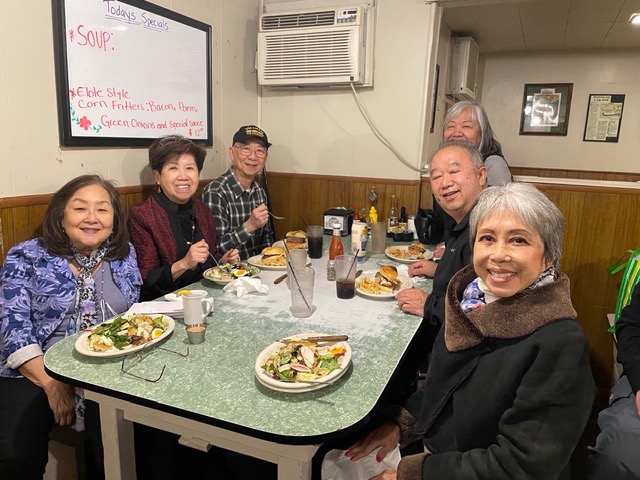
Tour group enjoyed lunch at the famous Al the Wop’s Beer Parlor and sharing facts learned from the morning tour.
It has always been said that lunch break at Al the Wops restaurant is one place to rejuvenate the spirit and learn more insight into Locke’s history while eating. I was curious to know why an Italian restaurant was welcomed or even allowed in a predominantly Chinese street. The story goes, according to Carol Lee, that in 1901 a passenger ship, sailing between Asian ports and San Francisco, was wrecked in San Francisco Bay due to dense fog. As the ship was sinking, an Italian fisherman, unlike others, went out to save some of the Chinese passengers. To date, it is said to be the worse maritime disaster in San Francisco history. Of the 218 passengers, maybe 85 survived. When this Italian family’s son needed a place to hide eventually due to unknown causes, the indebted Chinese hid him within a family restaurant, which eventually was sold to Al, the son of the Italian fisherman. The restaurant still stands, and thrives with customers from locals, visiting tourists, and of course, our group. One fun sight inside is seeing the hundreds of dollar bills hanging from the very high ceiling, said to have been flung there by past winning gamblers in celebration. Nowadays, it probably comes just from tourists and patrons who want to try it. In Isleton, a converted bar shows off a traditional Chinese wedding bed, as well as historic photos of Shanghai women adorning its restaurant tables and an alcove at the entrance filled with old Chinese photos.
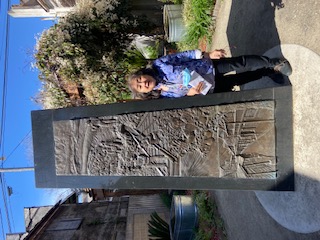
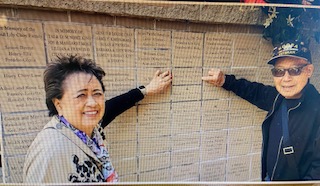
Guide Carol Lee welcomes all to Locke Memorial Garden. Calvin & Gerrye Wong show their wall tile showing support of Locke Folundation mission.
A visit to Locke’s Memorial Park is always on the Locke Foundation tours, which is dedicated to the Chinese who built the railroad, levees, and agriculture of California and the town of Locke. Lining the edges of the garden are walls where personalized engraved stone tiles are placed, purchased by individuals, groups, organizations and visitors who wish to honor loved ones or support the revitalization and preservation projects of the Locke Foundation. For more info on the Locke Foundation, its visitor center, tours and donations towards its wall tiles, check website www.locke-foundation.org Contact email at lockefoundation@frontiernet.net.

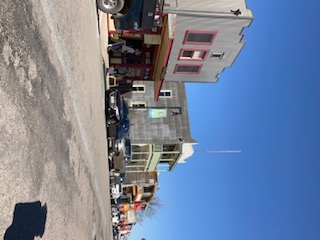
Tour group ventures to neighboring town of Isleton where many Chinese families resided previously.
Still thirsting for more information about the delta area, our Locke Foundation tour guides took us to the neighboring city of Isleton to visit a newly opened museum in the former Bing Kong Tong building. Volunteer Docent Lynne Hasz warmly welcomed our group, telling us of the renovation of this historic building and the many years of work to establish it as a wonderful museum of history of the town of Isleton. Jean Yokotobi greeted the group and led us down its bustling street to the area where the Japanese once lived. She pointed out a tall water tower which she announced was once the location of the segregated Oriental School, where Chinese and Japanese school children attended, as they were not allowed in the general public schools of the city at that time. It may be hard for some of our younger generations to realize that less than 100 years ago, Chinese and Japanese American children were discriminated against and forbidden by law to attend the regular public schools with their white neighbors. These hard facts of prejudice faced by our Chinese pioneers need to be told in history books. Unless one goes on these private tours, these facts are never told in history books taught in public schools even today.
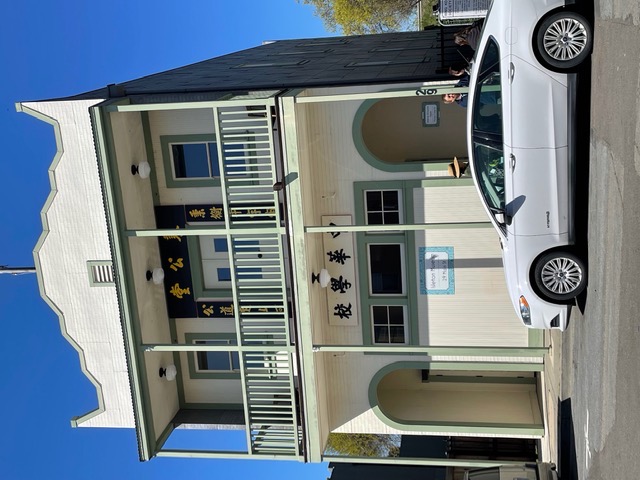


Restored Bing Kong Building Museum Local bar displayed traditional Chinese wedding bed and tabled decorated with old posters of Shanghai women.
Isleton, unlike Locke, seems to continue to be a thriving town in the Delta. Lynne showed us architectural drawings once proposed by former resident Roger Chinn, former Foster City Mayor, and landscape architect Mel Lee with progressive recommendations to revitalize the Main Street of Isleton. Unfortunately these plans never came to fruition. However, we suggested that their foresight should be shown somewhere in the museum, so that someday more of the Chinese history of the town can be shown to visitors.
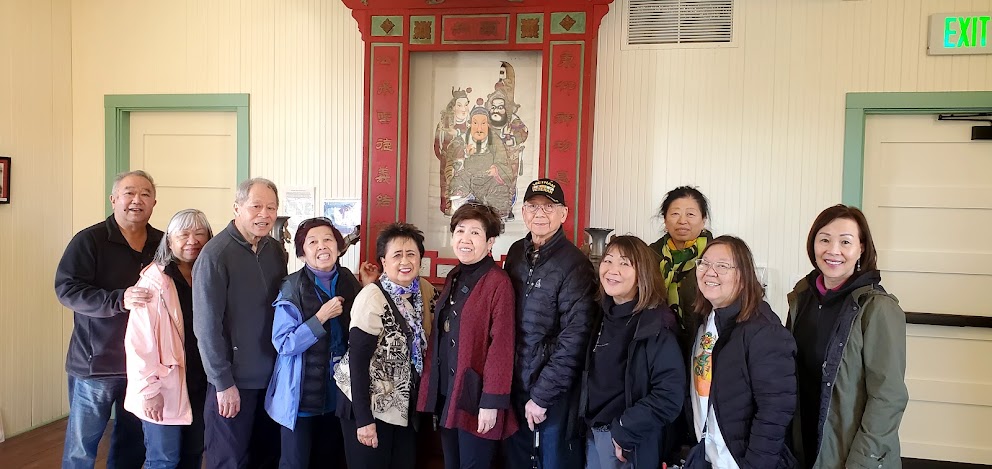
Group assembles before second floor altar at the Isleton Museum
When one drives the roads alongside the Sacramento River, it is hard to imagine the levees that had been built by the Chinese laborers over a century ago, but think of what their labor has contributed to the agricultural industry that arose following their saving of this development of farmland. To conclude our visit to this interesting part o California not often visited by fellow Californians, we visited another neighboring town of Walnut Grove, which also has a rich history of Chinese laborers who lived and worked in the farming industry.

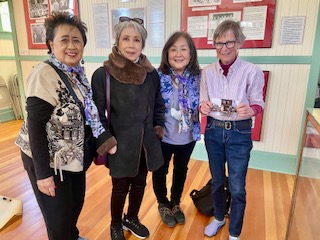
Isleton Museum guide explains the years-long process of refurbishing the original Bing Kong Tong Building to Gerrye Wong, Locke Foundation members Corliss Lee & Carol Lee
As a final farewell, Locke Foundation Secretary Doug Hsia welcomed our group to his 140 year old historic home which has a story of its own, surrounded by waters of the delta as well as cherry and pear orchards in Walnut Grove. Although his own personal roots are from Hong Kong and San Francisco, he told the group of his personal interest in forming a Chinese American Heritage Network (CAHN) which includes organizations interested in preserving, sharing and presenting Chinese American history to its own communities. Thus far he has enlisted 13 NortheRn California organizations in support and looks to others who can work together to collaborate on activities and events to serve that mission.
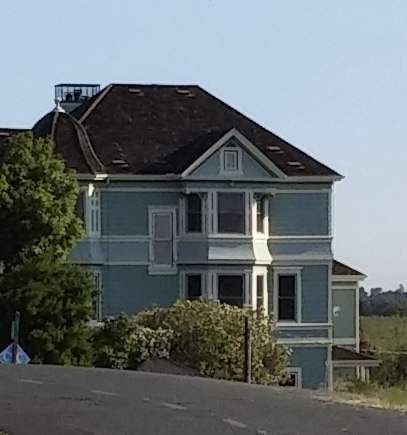
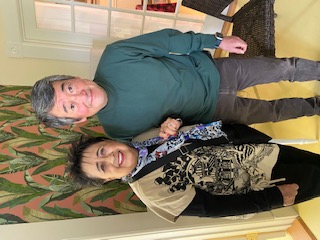
Chinese American Heritage Network Coordinator Douglas Hsia welcomes group to his home in Walnut Grove.
Doug informed the group that the CAHN held its initial formation meeting in 2021 where eleven organizations sent representatives. The mission they adopted, in addition to the name of Chinese American Heritage Network, was to be “Connecting Chinese American locations.” Present at this initial meeting were representatives from the following: Auburn Joss House, Isleton Bing Kong Tong, Folsom Historical Society Chan House, Chinese American Museum of Marysville, Chinese Historical and Cultural Project (CHCP) of Santa Clara Valley, Chinese Historical Society of America (CHSA) in San Francisco, Fiddletown Preservation Society, Friends of China Camp, Locke Foundation, and the late Gerry Sabado event group now known as Walk of Remembrance in her memory in Pacific Grove. Douglas Hsia was elected coordinator for the present time, as was Secretary Sam Dunham of the Auburn Joss house group and Justin Hoover from CHSA. As Douglas explained to me, “I think CAHN’s job Is to keep everyone connected. Events should come from the members. ” It seems that for the future, it is hoped that the organization members will keep each other informed of their own activities, with anticipated support from all as a loosely consortium of museum groups. Hsia added, “The important thing is that we keep the communication going, giving each other support when needed, with the success of the network/consortium depending on more constant communication amongst its members, ” Doug said. . If interested in following or joining this CAHN’s work and involvement, check CAHN website or contact Coordinator Douglas Hsia – douglashsia@gmail.com.

I hope I have piqued all of your interest in making a visit to the delta cities, and in particular Locke with your family and friends, and your own organizations and clubs, whether they be Chinese or otherwise. Let’s show our pride in being Chinese, and what our forefathers did to make California the state that it is. Too long have we overlooked the contributions the Chinese made to the history of this country and especially California. I hope you will educate yourself and your children of the Chinese contribution and legacy of these long ignored facts of history. We need to finally acknowledge and appreciate the struggles those Chinese who came before us. Imagine their tenacity they exhibited as they endured to pave the way for future Chinese to come and live the American dream. If you have friends with roots in the delta area, please share them with the Locke Foundation Oral History Project (OHP). OHP’s newest project is called, “Women’s Voices”, with the goal of collecting women’s stories, acknowledging and preserving their Chinese legacy and managing the oral history collection, developing educational exhibits for the Boarding House Museum, producing a documentary film and eventually a published book of stories and photographs. As with nonprofit organizations with special projects, there is always need for funding and work from interested persons and volunteers. This is a worthwhile project to fire up one’s historical juices and thirst for more involvement sharing Chinese American history. The stories they seek are fragile and will be easily lost with the passing of time if we do not preserve them now. Give of your time and/or money to help this group continue their worthy cause of interviewing Chinese women and family histories in Locke and its neighboring towns. Contact info: 1) Carol Lee (Oral History Project). 2) Donations: “Oral History Project”. PO Box 1085. Walnut Grove, CA 95690.
I am sure all of the cars departing this Delta area following our tour had occupants just as enthused as me on learning the rich histories of each small community with added good intentions to return with family and friends so that more of this rich history can be shared with other Chinese American families with subsequent generations of unknowing persons. Locke is a small town in the middle of nowhere but important for its role in Chinese American history of the Delta region. Well worth a visit. Thank you to forgotten former families and citizens of Locke, CA who established this unique Chinese community. We hope more visitors come to learn about your home town.
 A WONDERFUL TOUR OF LOCKE ENJOYED BY CHCP MEMBERS AND DAVIS CHAPTER APAPA.
A WONDERFUL TOUR OF LOCKE ENJOYED BY CHCP MEMBERS AND DAVIS CHAPTER APAPA.
